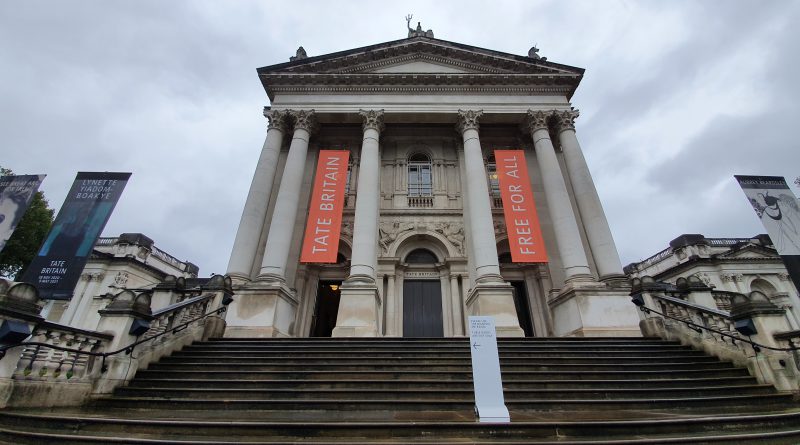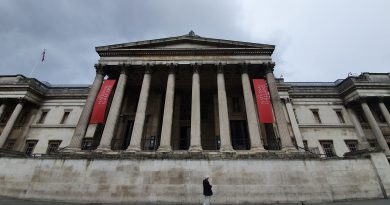London – Westminster – Tate Britain (Horizontal Stripe Painting by Patrick Heron)
I don’t understand great swathes of modern art, but there’s becoming an easy way to see if the art gallery that the artwork is located in has a clue either. Sometimes, the gallery can produce detailed information about the thought processes behind a painting, and that can give me an understanding of what is happening.
It’s clear that the Tate Britain has absolutely no idea here with this artwork by Patrick Heron (1920-1999). They haven’t even bothered to fill in the artwork summary, as I’m not sure that they have anything to say. Their entire comment on this (bearing in mind a lot of their paintings get paragraphs of text) is:
“Heron resisted the total abandoning of subject matter and even such works as this have been seen in relation to landscape, the horizontal bands and colours perhaps suggesting the horizon at sunset.”
The gallery acquired this artwork in 1972, so after nearly fifty years, they’ve found nearly nothing to say on it. It was designed for an office (Lund Humphries), where they needed to change it for another of Heron’s works, and Heron himself noted:
“I believe that the actual spatial sequences of the room which has been designed at Lund Humphries are in a sort of contrapuntal relationship with the illusions of space which my canvas creates from its floating position on one of the walls in that room. Actual space is chopped up, marshalled, articulated and as it were modelled by the screens and counter and the hanging slatted ceiling, and this is done in such a way that this actual space marries with the illusionistic space in the stratified spatial bars which ascend in chords of different reds, lemon-yellow, violet and white up the length of my vertical canvas. As your eye climbs the “steps” of differentiated colour in my canvas, so you yourself may step back into the actual spatial areas of the room. Seen from straight in front, the bars of colour in the canvas ascend directly into the parallel bars of the slats overhead, which advance not only towards the bars of the painting, but into them—or so it seems, since the slats are brought right up against the surface of the canvas at a point 3 ft. below the top of it. The top yard of the canvas is thus designed to be read through the slats of the hanging ceiling. There is, therefore, a continuous progression of horizontal parallels right from the foot of the painting in front of you, up the canvas, and then backwards, right over your head, along the hanging grid of slats under which you are standing or sitting. And not one of these parallel horizontals is equal to another, either in colour, breadth, or in the interval of its placing. The colour bands on the canvas are obviously dissimilar in every respect; but that the double row of slats overhead should also be uneven in appearance is due partly to perspective and partly to the different spacing of the upper and lower rows of slats.”
Crystal clear. Anyway, I don’t like it, I think it looks ridiculous. I don’t expect the art world will be too bothered by this announcement of mine…. What I have started to establish here is when galleries don’t seem to have a clue what an artwork is about either.





